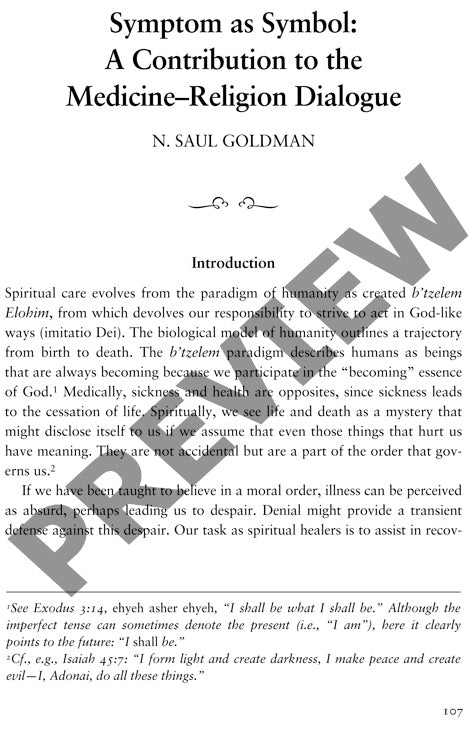Symptom as Symbol a Contribution to the Medicine Religion Dialogue
Couldn't load pickup availability
Abstract This article examines the intersection of medicine and religion through an exploration of symptoms as symbols in patient care. Drawing upon Jewish theological perspectives and contemporary medical practice, Goldman argues that spiritual care must move beyond the biological model of humanity to embrace the concept of humans as beings created b'tzelem Elohim (in God's image), who are continually becoming rather than merely existing between birth and death. The methodology employs hermeneutical analysis of religious texts, philosophical examination of the nature of symbols versus signs, and clinical observations from spiritual care practice. The study distinguishes between medical signs, which function as natural indicators pointing to specific pathological conditions, and symptoms as symbols that require interpretive dialogue between caregiver and patient to reveal deeper meaning. Goldman demonstrates how symptoms serve as encrypted messages that connect the seen and unseen dimensions of human experience, linking patients' social, spiritual, and biological realities. The analysis draws on cases including Job's suffering and Tolstoy's Ivan Illych to illustrate how symptoms function as narrative elements in patients' life stories. Key findings suggest that effective spiritual care requires understanding symptoms not merely as medical phenomena but as symbolic expressions of patients' search for meaning amid illness. The article concludes that while physicians may cure diseases, true healing occurs through spiritual insight that enables patients to experience integration and wholeness. This approach challenges the Cartesian dualism that separates body and soul, advocating for a holistic understanding that reframes scientific medical practice within the context of divine-human encounter. The research contributes to medicine-religion dialogue by providing a theoretical framework for interpreting somatic expressions as meaningful symbols requiring collaborative interpretation between spiritual caregivers and patients.

More Information
-
Physical Description
-
Publication Information
Published 2014
ISBN
-
Publication Credits

